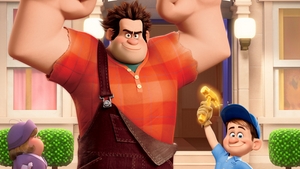 Should you manage to see Wreck-It Ralph blind and with no knowledge of its source of origination, you might be inclined to credit the film to Pixar. And while that wouldn’t be an unreasonable guess, you’d be wrong. Ralph has all the bearings of Pixar at its finest, yet Rich Moore’s first feature length effort comes to us from none other than the Mouse House itself. Arriving six months after the release of Brave, Ralph gives weight to the theory that both animation studios are just blurring together more and more in the wake of Pixar’s acquisition by Disney in 2006. If that strikes anyone as a bad sign for creativity, then the news that Wreck-It Ralph happens to be the best Pixar film Pixar didn’t make ought to change their minds.
Should you manage to see Wreck-It Ralph blind and with no knowledge of its source of origination, you might be inclined to credit the film to Pixar. And while that wouldn’t be an unreasonable guess, you’d be wrong. Ralph has all the bearings of Pixar at its finest, yet Rich Moore’s first feature length effort comes to us from none other than the Mouse House itself. Arriving six months after the release of Brave, Ralph gives weight to the theory that both animation studios are just blurring together more and more in the wake of Pixar’s acquisition by Disney in 2006. If that strikes anyone as a bad sign for creativity, then the news that Wreck-It Ralph happens to be the best Pixar film Pixar didn’t make ought to change their minds.
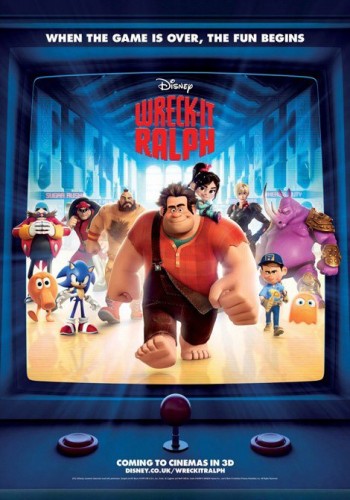 Admittedly, that’s a lofty claim. Ralph may not match the high points in Pixar’s body of work, but neither did Brave, and Brave turned out to be a completely fine film in its own right. But Ralph towers head and shoulders about that progressive, subversive princess picture, and for the year represents the highest watermark in animated wizardry we’re likely to see before 2013 is born. The question, then, is one of how Wreck-It Ralph rings so strongly of the sensibilities that we’ve come to associate with the Pixar brand, and the answer turns out to be maddeningly simple: blend an eccentric, quirky, whimsical premise with highly resonant and impacting emotional themes as well as rich, soulful characters, and let that magical brew steep for a good, solid ninety minutes until just right.
Admittedly, that’s a lofty claim. Ralph may not match the high points in Pixar’s body of work, but neither did Brave, and Brave turned out to be a completely fine film in its own right. But Ralph towers head and shoulders about that progressive, subversive princess picture, and for the year represents the highest watermark in animated wizardry we’re likely to see before 2013 is born. The question, then, is one of how Wreck-It Ralph rings so strongly of the sensibilities that we’ve come to associate with the Pixar brand, and the answer turns out to be maddeningly simple: blend an eccentric, quirky, whimsical premise with highly resonant and impacting emotional themes as well as rich, soulful characters, and let that magical brew steep for a good, solid ninety minutes until just right.
It sounds simple, but the truth is that making a film like Wreck-It Ralph isn’t an easy feat. Truthfully, at first blush Ralph looks like nothing more than a nostalgia piece, a film that’s endlessly fond of video games in general and classic games specifically; Ralph himself (John C. Reilly) hails from a Donkey Kong analog where his sole daily task is to be the bad guy, tearing down an apartment building that invariably gets repaired to perfection by Fix-It Felix (a superbly cast Jack McBrayer), the game’s protagonist (and Ralph’s “nemesis”). The turn, of course, is that Ralph and Felix are just fulfilling their responsibilities as the stars of the game– it’s a job. Felix clearly has the better end of the deal, and Ralph is dissatisfied with being the heavy and having nothing to show for it after thirty years of dedicated wrecking.
So he runs off to find a game where he can be the hero and win a medal, and inadvertently knocks the natural order of things out of whack in the process. Wreck-It Ralph‘s plot starts in earnest once the big, loveable lug of the title takes a run at glory in a modern game called Hero’s Duty whose violent intensity immediately sends Ralph into a panic. Eventually, he wins his coveted prize and through a series of follies winds up in a much less hostile game (a literally candy-coated racing game), but his program-hopping causes some serious damage in his home world and puts the residents of each game he visits in jeopardy.
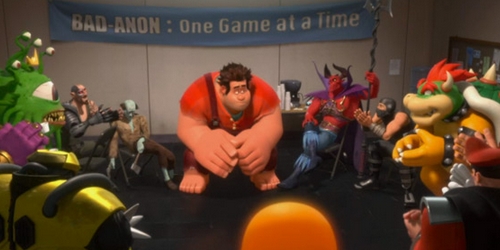
The first thing to note is that Wreck-It Ralph has a deep-rooted fondness for video games– veteran gamers will have a lot of fun trying to catch all of the cameos from luminaries like Sonic the Hedgehog and M. Bison– but in spite of how much fun the film has breathing life into the video game world, it’s not really about them. Video games are really just a backdrop for the sort-of hero’s journey Ralph finds himself on once all of the aforementioned pieces are put in place and Ralph begins accepting his role as the “bad guy” and begins to understand what the term really means for him. It’s the obvious and logical direction for the film to take, but Ralph distinguishes itself with the amount of care put into crafting the hidden universe of video game avatars and investing us in the narrative arcs of its characters.
How does a film make us empathize so strongly with a cast where each character is essentially just a pile of code inhabiting arcade subspace? We can supply the voice cast with the lion’s share of the credit for that feat, especially the much-beloved Reilly in the role of Ralph, and Sarah Silverman, who plays a scrappy and adorable programming glitch in the kart-racing game and has more significance than her sidekick trappings suggest. But it’s not just the voices that bring Wreck-It Ralph to life, as the film proves to be as prominent a showcase for strong theme and narrative as stand-out voice performances.
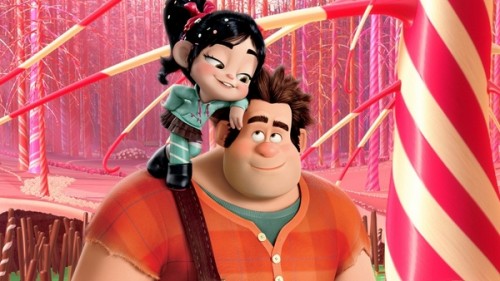
Wreck-It Ralph, ultimately, is a story about accepting and loving oneself. When the full ramifications of Ralph’s stubborn quest for personal achievement and individual satisfaction are revealed to us, the film’s philosophy becomes immediately clear: being a hero isn’t always about being the “good guy”, and Ralph realizes this when he comes to understand the distinction between what he does and who he is. Despite being a video game character, he has all the flaws and better qualities of a human being, and his heart remains in the right place even if his misguided wants take him in the wrong direction; in the end that combination of foibles and strengths comes to identify the whole tone of the film, sweet and bitter, uninhibitedly zany and shockingly human, colorful and dark all at the same time.
G-S-T RULING:
Not that Wreck-It Ralph should be identified strictly as a big morality tale (though I think John Stuart Mill would approve). The film wraps every substantial characteristic and meaningful detail up in a brightly colored package of unrestrained, limitless energy and imagination, all the while keeping its tongue firmly in cheek. At times that can be slightly exhausting– just before the film’s final third, things drag a bit as the manic, unapologetic wackiness catches up to us and the story begins moving certain puzzle pieces into their necessary places– but it’s hard to see the core audience of young kids having a hard time keeping up with what Ralph is peddling. For everyone else, Ralph is still the real deal, a complete gem of an animated feature driven by a passion for video games and a very real love for its characters.
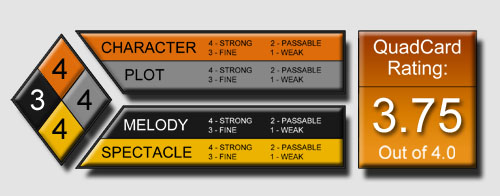

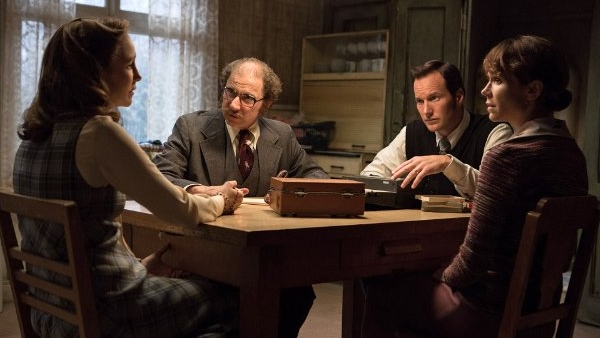
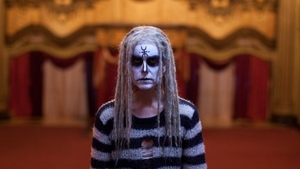
2 Comments
RidgeRacer4
Aside from 10 minutes of sluggish pacing the film worked very well with its sense of humor, familiar video game icons (well suited simply as cameos), and as you mentioned the “accepting and loving oneself” moral that came across naturally and wasn’t overplayed.
Silverman was the only voice that had trouble finding the groove of her character but other than that everyone else was pitch perfect…and speaking of Silverman, I can’t believe how choked up I got at that scene where Ralph puts his “wrecking skills” to work on the car. Talk about waterworks!
Finally, about the Disney/Pixar “Freaky Friday” feel to their respective 2012 features, I think someone (probably Lasseter), like settling a kids dispute at dinner, flipped a coin and said “OK you get the Princess fare, and you get the arcade movie”. Still if you think about it, Wreck-It Ralph is a Princess movie so it’s still very much in Disney’s wheel house. Only they really stretched their legs on this one and it paid off gloriously. Brave, not so much.
Andrew Crump
I was actually surprised by how much I dug Silverman here. At times I had difficulty telling it was even her. But she had great chemistry with Reilly, and yes, the wrecking scene is pretty heartbreaking– though in terms of tear-jerking, nothing topped that one moment where he recites the Bad Guy Affirmation. Reminded me of a certain 90’s Disney movie made by a certain guy named Brad Bird.
Anyways.
I thought the princess thing was interesting– Brave is obviously a princess movie foremost, but Ralph has its own princess, and really Ralph’s story is very similar to Merida’s.